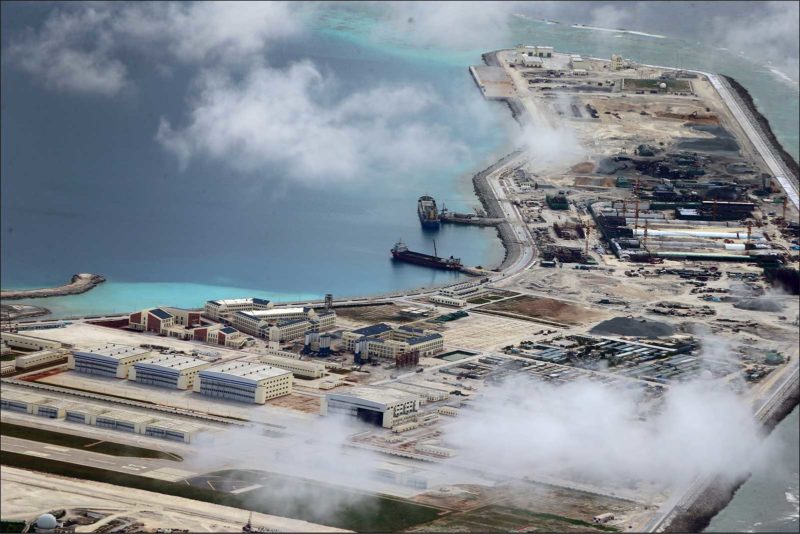MANILA, Philippines — China has announced its attempt to restore coral reefs damaged by the island-building for its three largest man-made outposts in the West Philippine Sea (South China Sea).
Ecological conservation and restoration facilities on Kagitingan (Fiery Cross), Zamora (Subi) and Panganiban (Mischief) Reefs in the Spratly archipelago went operational on Tuesday, China’s state-run newspaper Global Times reported.
“The goal of the facilities is to strengthen ecological protection in the South China Sea and to fulfill the responsibility of protecting and restoring the ecology of territorial space, according to the Ministry of Natural Resources,” the report said.
It said the restoration will be “mainly done by nature but artificially aided.”
An international tribunal ruled in 2016 that “China had caused severe harm to the coral reef environment,” in its large-scale reclamation and construction of artificial islands in the South China Sea.
The same court ruling invalidated China’s nine-dash line claims in the South China Sea, but the Asian superpower ignored the verdict and continued its island-building.
China claims mostly the entire South China Sea, but the Philippines, Vietnam, Malaysia, Brunei and Taiwan also have overlapping stakes in the strategic waterway.
Meanwhile Prof. Jay Batongbacal, director the University of the Philippines Institute for Maritime Affairs and Law of the Sea, expressed skepticism on China’s intentions and whether those three reefs would still be repaired.
“The reefs they mentioned, the three artificial islands, obviously these can no longer be restored because these are already buried in concrete,” he told INQUIRER.net on Thursday.
Surrounding areas of the man-made outposts, which were also affected by the island-building, might also struggle to be restored because there is “a lot of activity going on that will mitigate the ability of coral to recover.”
The maritime expert sees China’s announcement as not really meant for the rehabilitation of the reefs on those three artificial islands as they claim, but to assert administration and control of the rest of the South China Sea eventually.
“They will be carrying out rehabilitation projects in other areas. It’s as if another way to assert administration and control of the areas of the West Philippine Sea using these kinds of civilian activities and not military means,” he said.
He said the initiative was an attempt on their part to “soften the image” of the islands which have military purposes.
“They are focusing in trying to highlight the civilian uses and so-called public goods that these islands can also have. They are trying to present it to make it more acceptable to the region but it should not be forgotten that it’s just another step in the process of slowly asserting control in the entire South China Sea,” he said.
China’s three largest fortified outposts in the Spratly Islands have runways, anti-ship and surface-to-air missiles and radar jamming equipment.
Data from Asia Maritime Transparency Initiative said that China has completed work spanning 68 acres or 273,000 square meters on the three biggest islands in the Spratly archipelago in 2017 alone.
Aside from the direct impact to the marine environment, China’s island-building spree also contributed to the decline of fish stocks in the South China Sea.
“The productivity of the fisheries in the South China Sea is directly connected with the productivity of their habitats…It appears that the damage to the reefs in the Spratly Islands contributed to the decline of the fisheries there,” Batongbacal said. /muf
